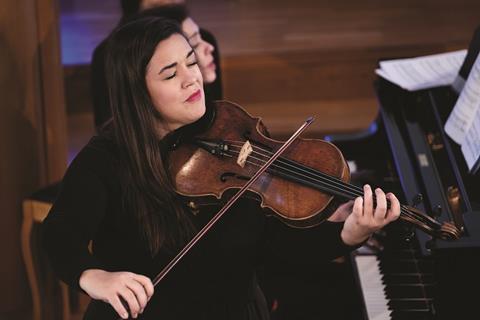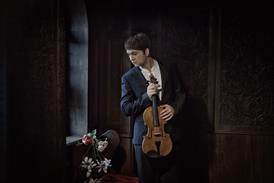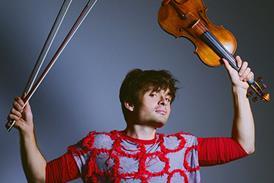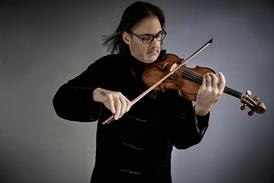For the American violist, this 1919 work brings back memories of early successes and the inspirational teacher who introduced it to her

Discover more Featured Stories like this in The Strad Playing Hub
This article appeared inThe Strad’s March 2018 issue.
I was 20 years old when I first heard Rebecca Clarke’s Viola Sonata. I was in my third year at the Curtis Institute of Music and I heard it as part of a student recital. What I remember most clearly about that performance was the opening: it sounded like a battle cry, a really forceful statement that led into an amazing juggernaut of joy and power, which continued right through the first page. I loved the idea of playing something with such immense vitality at the start of a concert, as if to say, ‘Here I am, and here’s the viola – take it or leave it.’
In fact, it became a kind of signature piece for me when I started entering competitions; almost every time I won a prize, I opened my final recital with Clarke’s Viola Sonata. My teacher Karen Tuttle thought it was a good fit for me, possibly because it’s a fairly mercurial piece, and people have said that I have a mercurial temperament to match it!
It encapsulates so much of what I consider to be the instrument’s identity in the span of three movements: I think of the viola as a character actor that can transform itself into myriad personalities, and this piece alludes to so many different kinds of music. There’s some Debussy and Ravel in there, some elements of jazz, and a feeling that the composer was inspired by the multiculturalism of America, where she’d arrived three years earlier. I’ve always loved the process of thinking about colouration on the instrument, and how to express what I find in a phrase, almost like a singer. This piece gives so many opportunities for that.
Listen: Impetuoso from Rebecca Clarke’s Viola Sonata performed by: Jennifer Stumm (viola) and Marianna Shirinyan (piano)
Read: Musical groundbreakers: Ševčík’s female pupils
Read: Pioneering Female String Players from The Strad archives
Read more Featured Stories like this in The Strad Playing Hub
Miss Tuttle, as all her students called her, had a wild kind of personality herself, with a great deal of original ideas about the instrument, about teaching and about how to play with expression. She had a chart on her wall showing a hundred faces, all with different expressions, and after I’d played a passage she would instruct me to point to the expression I was thinking of while playing it.
She’d tell her students that their job was like being a painter, and that a painter had to know which colour paint was going on the canvas at all times. That’s one thing that stuck with me throughout my artistic life. The Clarke Sonata was a perfect choice for me at the time; I was working out my overall approach to the instrument, and it encapsulates so many modes of expression, as well as variety in the bow. It’s not enough to play it well – it has to be played with intention.
For me, the process of learning the piece was about finding my own relationship with it and deciding how to enmesh it with my own identity as an artist. It also helped me make the leap from being a good student to becoming a protagonist on the stage. It was a watershed piece in that regard: I felt like I was putting on the clothes of the composer and representing her intentions as filtered through my own personality. My advice to students learning it today is to be incredibly demanding of yourself, to find all the richness of detail in the score, and then to explore the full spectrum of colour and expression that Clarke gives you.
I think that both Rebecca Clarke and Miss Tuttle were feminists before their time. Clarke was one of the first female professional orchestral players; she moved to New York on her own; she wrote music for herself to play when that was almost unheard of for a woman, and she entered it in a composition competition. It was assumed by some that a man had composed it under a pseudonym, because it was too good for a woman to have written it!
I draw a lot of inspiration from courageous women, and she was certainly one of them, considering all the obstacles she came up against. I think Karen Tuttle inherited that legacy and became a standard-bearer for the viola at that time. Both of their stories are inspirational for me in the work I do now.
INTERVIEW BY CHRISTIAN LLOYD
Read: Forgotten in HIStory: shining a light on female composers through the ages
Watch: Viola power: Tabea Zimmermann performs with Israel Philharmonic viola section
Discover more Featured Stories like this in The Strad Playing Hub
The number one source for playing and teaching books, guides, CDs, calendars and back issues of the magazine.
In The Best of Technique you’ll discover the top playing tips of the world’s leading string players and teachers. It’s packed full of exercises for students, plus examples from the standard repertoire to show you how to integrate the technique into your playing.
The Strad’s Masterclass series brings together the finest string players with some of the greatest string works ever written. Always one of our most popular sections, Masterclass has been an invaluable aid to aspiring soloists, chamber musicians and string teachers since the 1990s.
American collector David L. Fulton amassed one of the 20th century’s finest collections of stringed instruments. This year’s calendar pays tribute to some of these priceless treasures, including Yehudi Menuhin’s celebrated ‘Lord Wilton’ Guarneri, the Carlo Bergonzi once played by Fritz Kreisler, and four instruments by Antonio Stradivari.
Female violinists of 18th-century England: Portrait of a lady holding a violin
- 1
- 2
- 3
- 4
- 5
- 6
- 7
- 8
- 9
 Currently reading
Currently readingSentimental work: Jennifer Stumm on Rebecca Clarke’s Viola Sonata
- 10
- 11
- 12
- 13
- 14



















































No comments yet